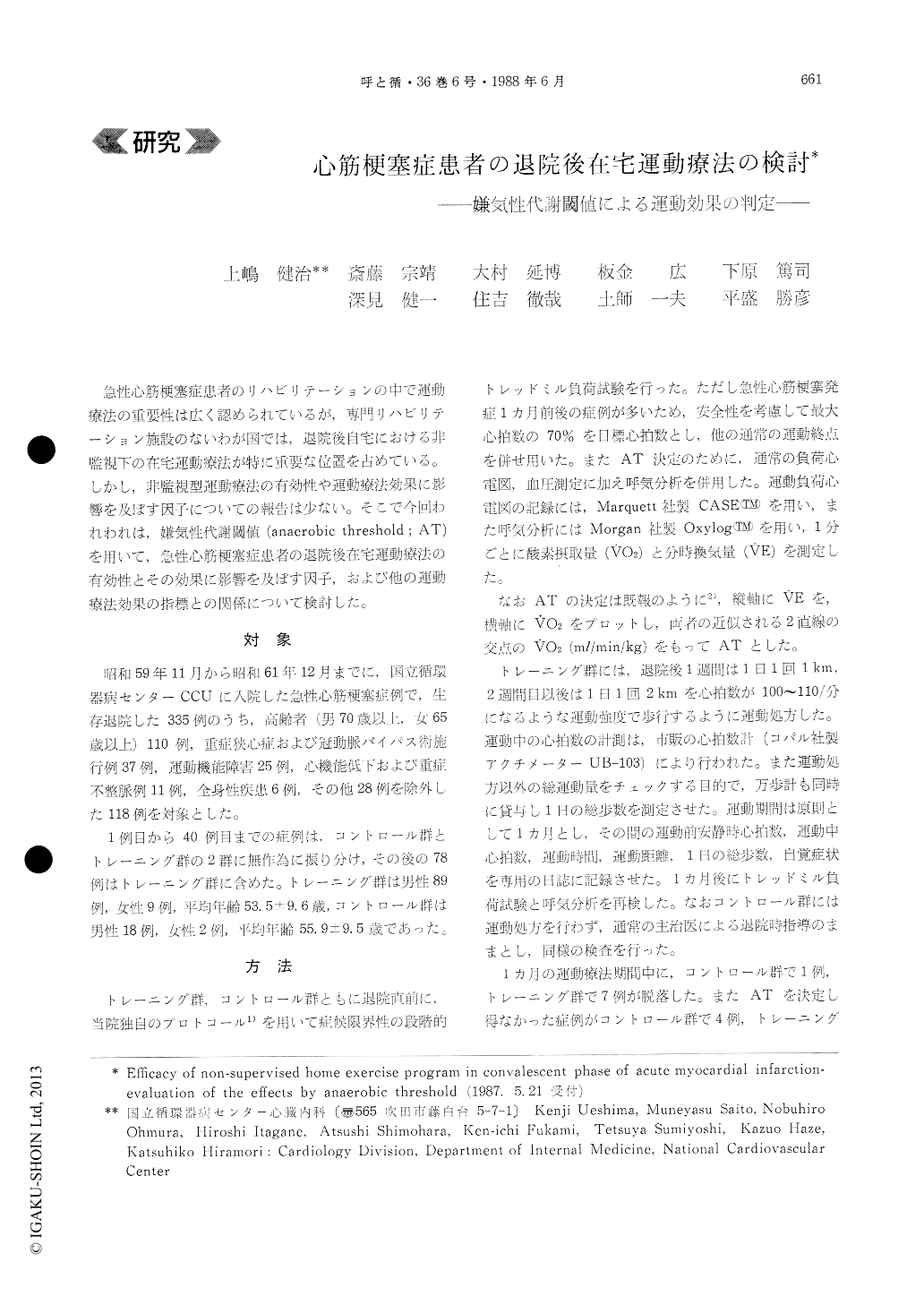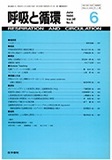Japanese
English
- 有料閲覧
- Abstract 文献概要
- 1ページ目 Look Inside
急性心筋梗塞症患者のリハビリテーションの中で運動療法の重要性は広く認められているが,専門リハビリテーション施設のないわが国では,退院後自宅における非監視下の在宅運動療法が特に電要な位置を占めている。しかし,非監視型運動療法の有効性や運動療法効果に影響を及ぼす因子についての報告は少ない。そこで今回われわれは,嫌気性代謝閾値(anaerobic threshold;AT)を用いて,急性心筋梗塞症患者の退院後在宅運動療法の有効性とその効果に影響を及ぼす因子,および他の運動療法効果の指標との関係について検討した。
Outpatient exercise program has not been esta-blished in Japan because of the lack of facilities and system. Therefore, we developed a non-super-vised home exercise program and applied it to patients with acute MI after their discharge from the hospital.
One hundred eighteen patients with acute MI were enrolled in this program immediately after their discharge from the hospital. Initial 40 patients were randomized to control group and training group, while all other patients were included in the training group. Before their discharge as well as 1 month after the trial, they underwent submaximal graded treadmill exercise test (target heart rate was 70% of max HR) with the application of expiratory gas analysis. In the training group, patients per-formed 2 km walk-jog exercise maintaining heart rate (HR) at 100-110/min during exercise everyday for 1 month. HR during exercise and total steps during 24 hrs were measured and recorded as ex-ercise records by patients, using commercially avail-able HR-meter and manpokei, respectively. Venti-latory AT was calculated from the standard tech-nique using Oxylog. Changes in AT (JAT) and changes in the heart rate at the same workload were selected as induces of training effects.
In training group, AT increased from 15.3 to 16.9 m//min/kg (p<0.05), while there was no significant changes in AT in control group. Heart Rate dec-reased significantly in both group after 1 month. In training group, dAT of the patients with angina pectoris is smaller than that of the patients without angina pectoris. ΔJAT inversely correlated with pre-training AT (r=-0.62), while ΔAT and ΔHR poorly correlated with each other, indicating that underlying mechanism of changes in AT and HR might be different.
It is concluded that non-supervised home exercise program is effective, especially in those with poor exercise capacity, and easily applicable in convales-cent phase of myocardial infarction.

Copyright © 1988, Igaku-Shoin Ltd. All rights reserved.


